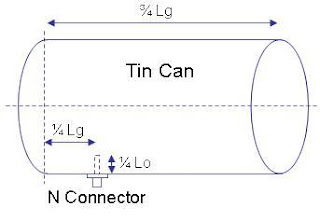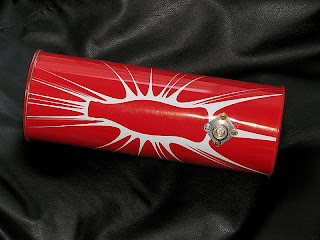http://karnaintrack.blogspot.co.uk - Using the Internet via a wireless router in our homes has never been more popular, but sometimes the router just doesn't provide a strong enough signal. Using a DIY WiFi booster is an excellent way to improve your signal for little to no investment, other than a few minutes of your time. Several things can impact the WiFi signal, from the thickness of walls, to usage of microwaves near the router. Creating your own WiFi signal booster to get around this problem can be achieved in many ways.
Yes, I know this isn't strictly decorating, but even us decorating divas like to make improvements around the home that are practical too!
Use Aluminum Foil
The easiest of all the signal boosting methods shown here, with highly effective results, uses aluminum foil to create a DIY Parabolic reflector.
- Aluminum foil
Use a Metal Sieve
This method, uses the same principle as a parabolic reflector above, but utilizes a USB WiFi dongle to boost the signal, instead of acting on the WiFi router directly.
- Metal sieve
- USB extension cord
- USB WiFi dongle
- Wire snips
2. From the other side, connect the USB WiFi dongle to the extension cord.
3. Secure the extension cord to the sieve with glue or electrical tape, then wrap the cord around the handle and secure this section again with glue or tape.
4. Watch your WiFi signal boost to the max.
Create Your Own Radar Dish
Using Aluminum foil to create a radar dish, you will need:

- Plastic bowl
- Foil
- Electrical tape
- WiFi adapter that connects to your USB port
Build Your Own WiFi Antenna, or Cantenna
 |
| http://commons.wikimedia.org/wiki/ File:Tin_Can_Antenna_Design.jpg |
- Pringles can/coffee can - Soup and veg cans work too but they need to be a large size; also try the tube boxes that whiskey bottles sometimes come in.
- WiFi USB adapter with removable antenna.
- Pigtail cable (find on stores and websites as RP-SMA Pigtail).
- Bulkhead connector (N type female chassis connector).
- Copper wire - make sure it's a good gauge/thickness - you only need a very small amount (around 1.25 inches/3cm).
 1. Solder the copper wire to the end of the chassis connector. Then make a hole in your tin can, big enough to house the connector you just made.
1. Solder the copper wire to the end of the chassis connector. Then make a hole in your tin can, big enough to house the connector you just made.2. Push through the N type connector, so the wire is inside the can, and part of the connector is still outside. You'll need to leave this section outside of the can, so you can connect it to the pigtail cable. Screw the items together (using the larger end of the pigtail cable).
3. The end of the pigtail cable with the smaller connector will now screw onto the USB WiFi adapter (removing the supplied antenna first).
4. Point towards your chosen router for huge WiFi signal boosting results.
And the Results?
Using a DIY WiFi booster in your home, can give instant signal boosting results in no time.
If you aren't sure how successful your chosen method of WiFi signal boosting has been, check the number of bars, or percentage rating, for your WiFi router, without the use of your WiFi signal booster, and then check it again afterwards. Not only will you be amazed by the results, you'll certainly never look at a Pringles can, in quite the same way again!









0 komentar:
Posting Komentar